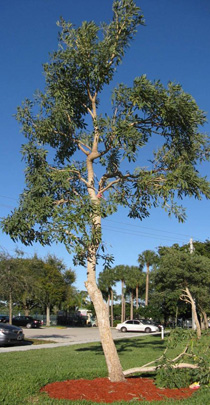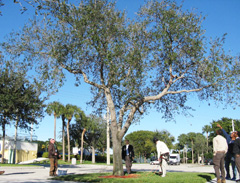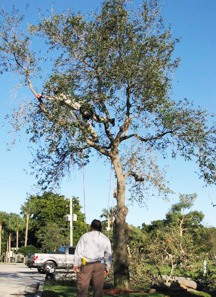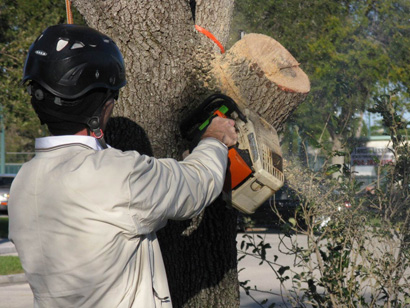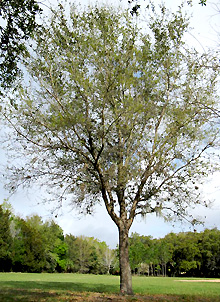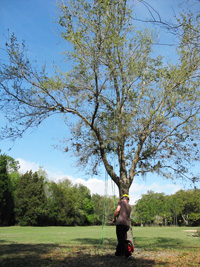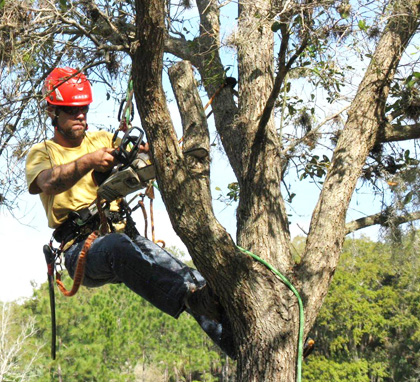Home > Pruning shade trees > Raising or lifting canopy > Raising and structural pruning combined
Raising and structural pruning combined
The best way to manage trees in urban and suburban landscapes is to begin gently raising the crown when trees are very young. This strategy is easy on the tree and is barely noticeable to passers-by. Low branches are kept small in diameter by reducing their length and then removing them some time later. Some branches may be removed entirely now. This trumpet tree had several branches growing from the lower and middle trunk growing upright into the top half of the canopy. Many trees grow this way. One branch on the lower right was removed entirely, the other large branches were shortened. Small branches were not removed - there is no reason to remove small branches. Not only did this strategy raise the crown so people and lawn mowers could pass easily under the tree, the pruning also improved the branch architecture resulting in a stronger tree. Structural pruning in this manner should always be considered when the crown is raised.
Before pruning
|
After raising and structural pruning
|
Before pruning
A live oak with an aggressive low branch that should have been removed much earlier. Because it is way too close to the ground and is getting in the way, it will be removed now instead of allowing it to become even larger. |
After raising and structural pruning
The lower right branch has been removed and the arborist is reducing one of the several largest branches so future growth occurs in the leader. |
Making the final removal cut to raise the canopy
|
|
Before pruning three stems dominated
|
After reducing stems and raising
Two stems competing with leader were reduced and crown was raise slightly. |
Reducing a competing stem to prepare the parent branch for removal some time later. This is a good method of raising the crown over time. |
|


